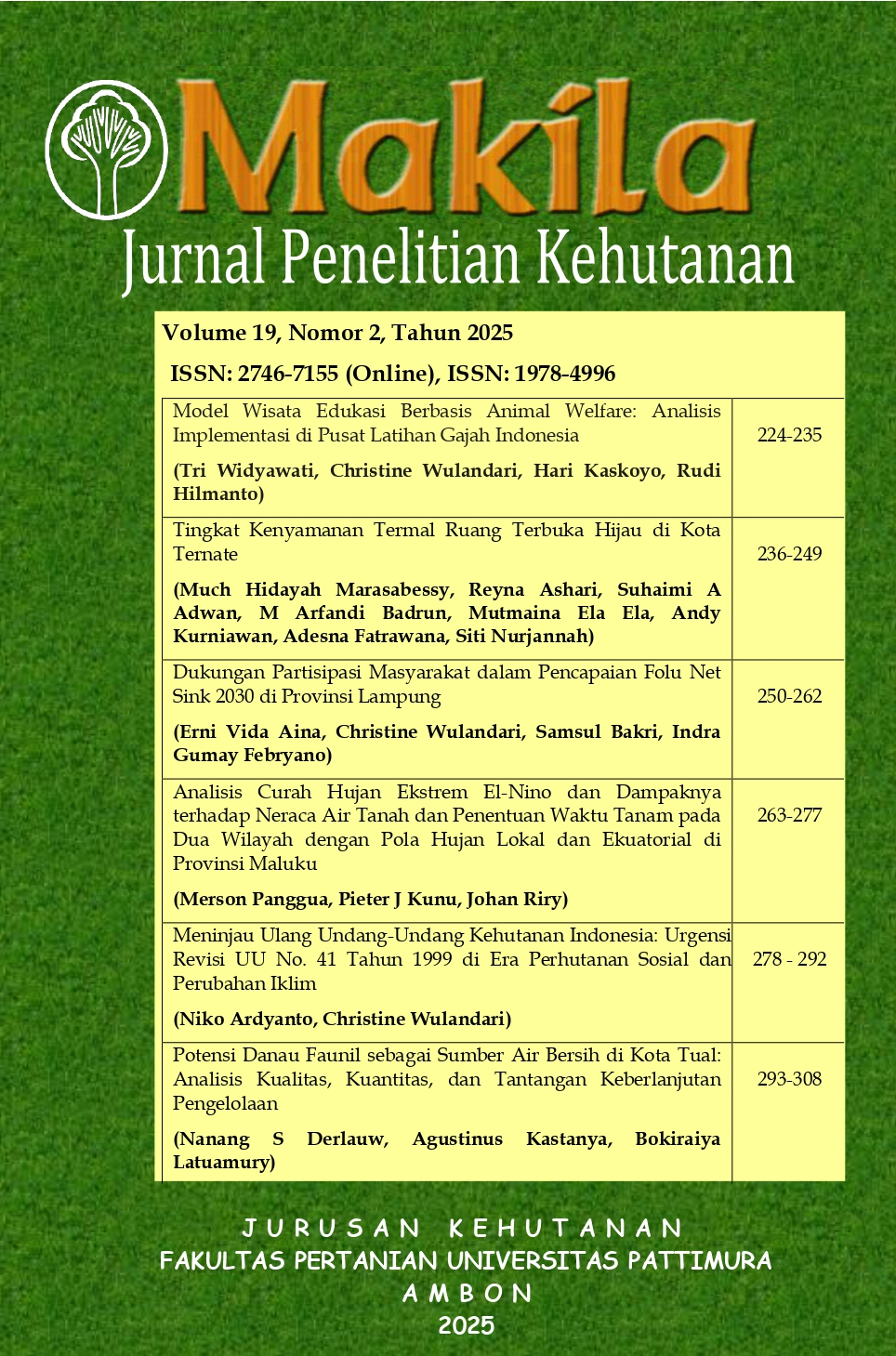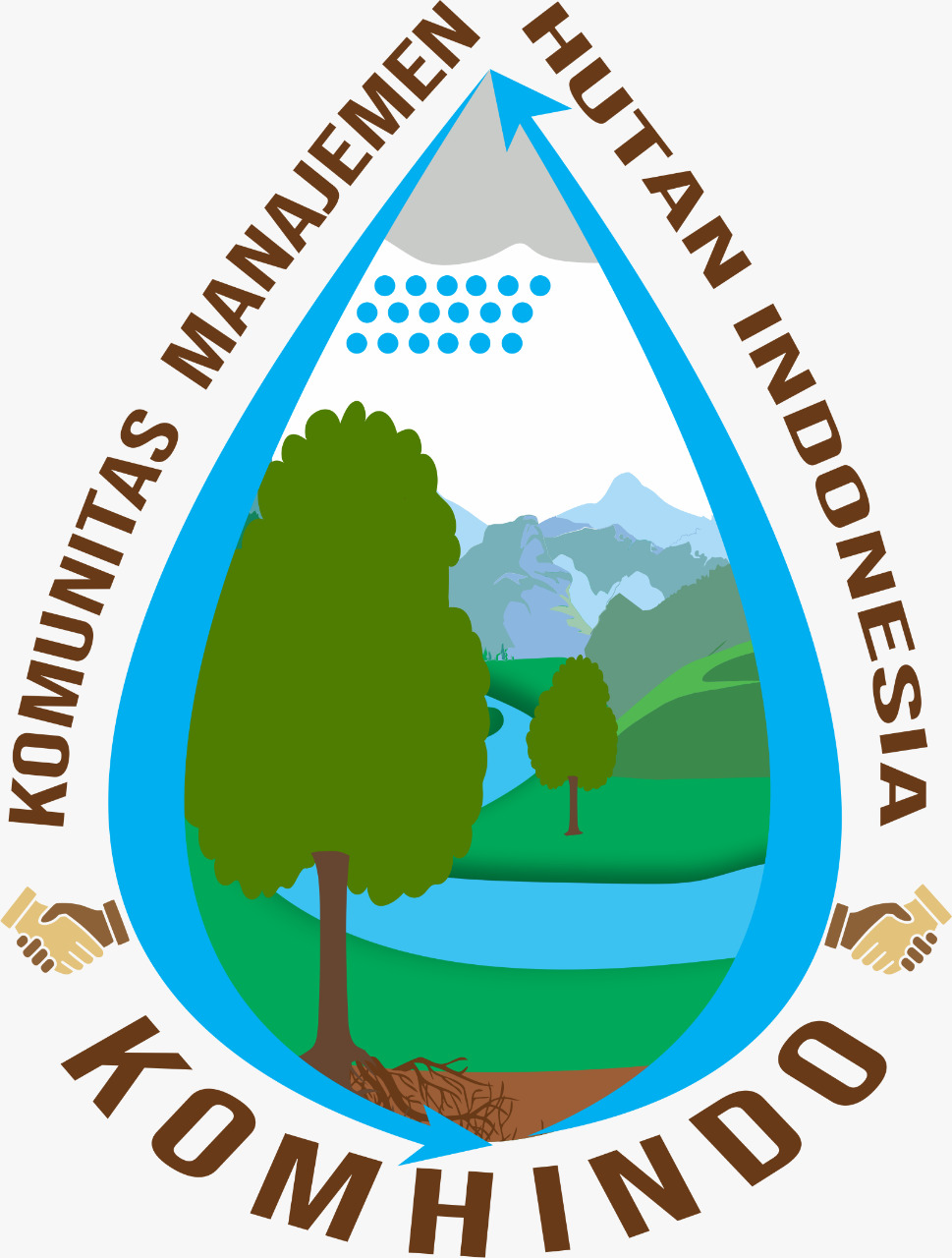Tingkat Kenyamanan Termal Ruang Terbuka Hijau di Kota Ternate
Abstract
Urban development has significantly altered microclimatic conditions and reduced environmental comfort within urban ecosystems. Green Spaces, as a component of urban forestry, play a vital role in restoring ecological balance by moderating air temperature and enhancing humidity through its vegetation structures. This study examines the contribution of urban vegetation to thermal comfort in three Green Spaces areas of Ternate City—Nukila Park, Oranje Fortress, and Cengkeh Afo—using the humidex index, which integrates air temperature and humidity to assess human thermal comfort. Data collection was conducted over 15 consecutive days at each site across three observation points representing varying canopy densities (dense, sparse, and no canopy) during morning, midday, and afternoon periods. The findings reveal that the highest humidex value occurred at Nukila Park (maximum 50.9 °C), while the lowest was recorded at Cengkeh Afo (minimum 33.6 °C). Dense canopy cover consistently contributed to lower humidex values, indicating its critical role in enhancing thermal comfort and mitigating urban heat stress. Despite all sites falling outside the “comfortable” category (<29 °C), variations in thermal comfort were primarily influenced by vegetation structure, canopy density, elevation, and the surrounding land use. These results underscore the strategic importance of urban forestry planning and the enhancement of vegetation cover to improve microclimatic conditions and support sustainable urban ecosystem management. This study also recommends increasing vegetation canopy cover through the management of green spaces based on local plant species.
Downloads
Copyright (c) 2025 Much Hidayah Marasabessy, Reyna Ashari, Suhaimi A Adwan, M Arfandi Badrun, Mutmaina Ela Ela, Andy Kurniawan, Adesna Fatrawana, Siti Nurjannah

This work is licensed under a Creative Commons Attribution 4.0 International License.











